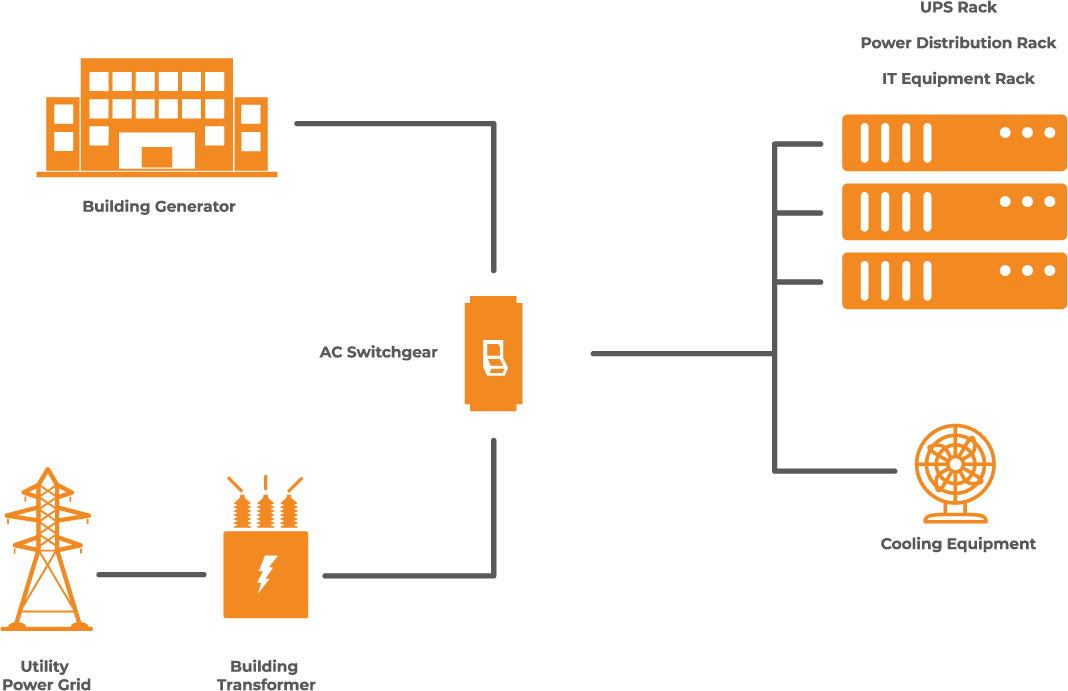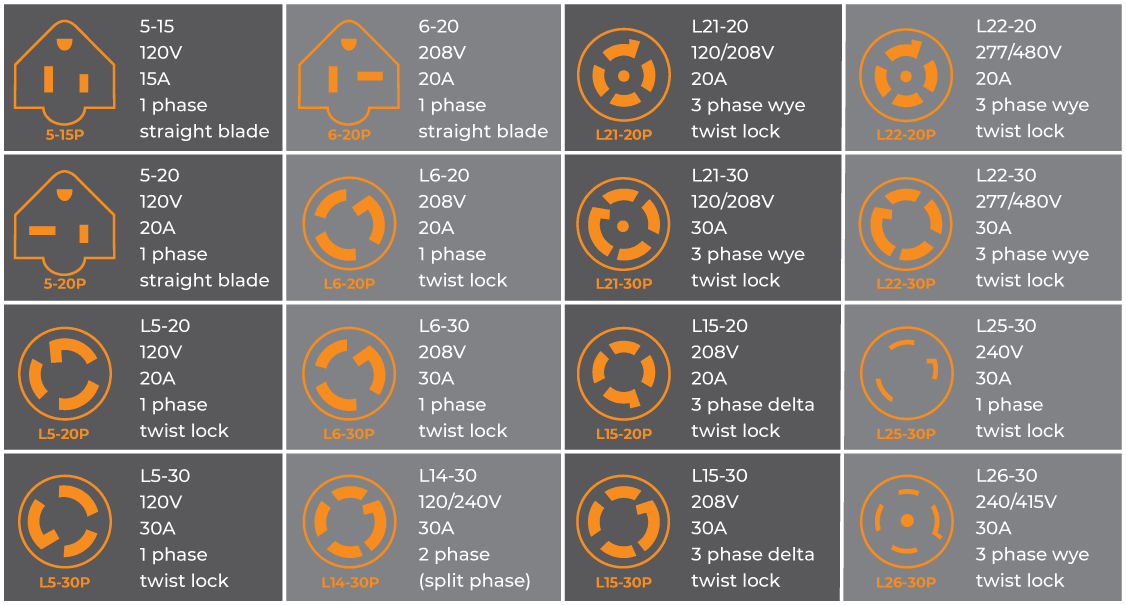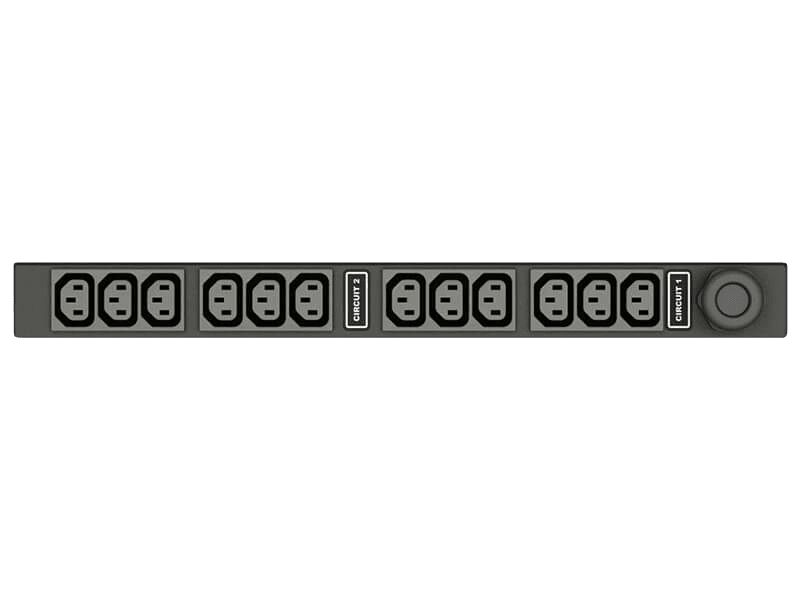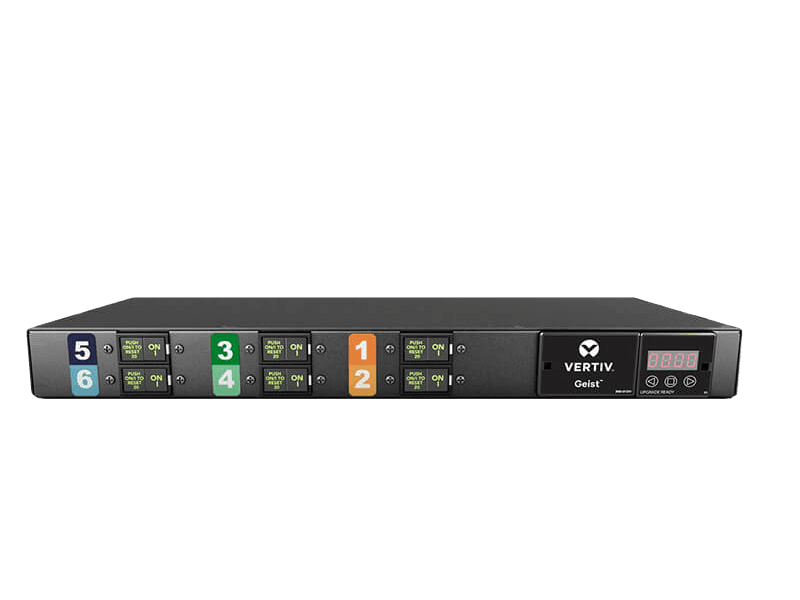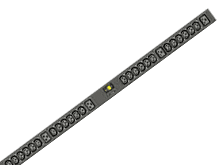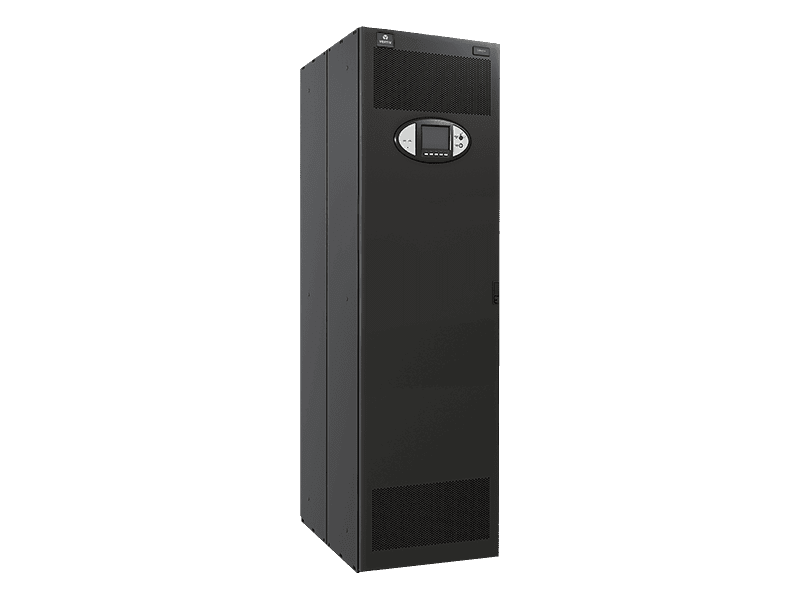PDU Buyer’s Guide
This PDU buyer’s guide was developed to answer some of the basic questions organizations have about PDU systems.
What is a PDU?
A PDU, or Power Distribution Unit, is a type of equipment that controls and distributes power to computers, servers, and networking devices within an IT environment.
A PDU helps your IT environment by:
- Detecting abnormalities
- Increasing efficiency, minimizing downtime
- Protecting and distributing power
- Reducing operating costs, increasing reliability
Beyond standard power distribution, facility managers can utilize PDUs for in-depth power management and monitoring in their IT infrastructure.
Power Distribution Units are Ideal for:
- Data Centers
- Industrial Environments
- Network Closets
- Small IT Environments
- VoIP Phone Systems
How Does Power Distribution Work?
Power distribution is facilitated through equipment that takes the power conditioned through the uninterruptible power supply (UPS) and distributes it within the IT environment.
Available in a variety of configurations, PDUs are able to manage and control energy consumption in everything from small IT environments to a large, critical infrastructure.
Types of Power Distribution
Evaluating your IT environment needs is critical to selecting the correct type of PDU.
RACK-BASED PDUs
Rack PDUs distribute power in rack environments with multiple outlets and come with a range of intelligent features.
FLOOR-BASED PDUs
For larger data center environments, floor-mounted PDUs are used to transform power and distribute it to lower capacity
power feeds.
POWER DISTRIBUTION CABINETS
Available for both raised and non-raised environments, this type of PDU takes incoming power and distributes it to an individual rack or groups of racks.
REMOTE POWER PANELS (RPPs)
Remote Power Panels are best for growing IT environments that need flexibility in design while maintaining space.
STATIC TRANSFER SWITCHES (STS)
The STS seamlessly shifts loads from normal sources to a backup standby power source during faults or outages.
BUSWAYS
Designed for high-density data center applications, busways provide flexible overhead power distribution where change and adaption are important.
UNINTERRUPTIBLE POWER SUPPLY (UPS)
A UPS is a device which provides emergency power to IT equipment when the primary power source is interrupted or fails.
Now that you have a better understanding of power distribution, let’s take a closer look at the features and benefits of rack PDUs.
How to Choose the Right PDU
While each IT infrastructure is different, here are some key questions to consider when selecting your PDU.
- Where will I install it?
- What type of power supply will I need?
- How much power does my equipment need?
- How many outlets do my devices need?
- What kind of receptacles do my devices need?
- Do I need other features?
Where Will I Install it?
Considering the location of the Data Center is critical. Power distribution equipment can be used in rows, racks, rooms, and even modularly. For rack based PDUs, there are two types of configurations to consider: vertical or horizontal.
VERTICAL PDUs
The form factor can be tailored to fit most rack heights and are installed at the back or side of the rack enclosure, so these do not take up critical equipment-mounting space inside the rack.
HORIZONTAL PDUs
Horizontally mounted PDUs are installed within the rack U space and sit horizontally in line with your IT equipment. Typically, horizontal units take up 1U or 2U of rack space
and have 8-16 outlets.
What Type of Power Supply Will I Need?
Depending on your location and building type, you may have either single-phase, common in small offices, or three-phase power, common in larger critical and commercial environments.
How Much Power Does My Equipment Need?
Each piece of equipment should list the maximum amount of power it can consume either in volt-amperes (VA) or in watts (W). After adding up the total power consumption of all your rack mounted equipment, that total should be lower than what your power source is rated for.
In the US, the voltage used to power servers and networking equipment is typically 120V or 208/240V. Europe and Asia typically provide 230V power.
What Type of Receptacles and How Many Outlets Do I Need?
A good rule of thumb is to make sure there are at least enough PDU outlets for the number of receptacles you need to connect. You should also consider having extra outlets for future growth. Be sure the PDU you choose matches the types on the equipment it will be connecting to.
Common Types of Receptacles
STANDARD NEMA PLUGS
IEC320
Features of PDUs
Depending on your IT environment needs, there are a variety of features you can use to maximize your facility.
Outlet Control
Address unresponsive equipment or increase runtime of critical equipment upon power failure with outlet-level control.
Environmental Monitoring
Monitor environmental conditions within the cabinet to ensure optimal operating conditions. A variety of sensors are available including temperature, humidity, airflow, door position, liquid detection, and more.
Remote Connectivity
Access the rPDU remotely via the network interface or serial connection to monitor power consumption and configure user-defined alert notifications to prevent downtime.
Hot Swappable
Easily update your PDU’s monitoring capabilities to adapt to latest technologies and changing business needs.
Daisy Chain Capabilities
Daisy chain up to 50 devices on a single IP address. Reduce deployment time with self-configuration of downstream devices.
Ulock Outlets
Secure power cords and avoid accidental disconnections. Receptacles are color-coded by circuit for instant identification.
Types of Rack PDUs
To find out which features will be the most valuable to you, consider the various types of rack PDUs.
Basic PDU
A Basic PDU consists of a power strip with a pre-selected number of power outlets. Some variations offer optional surge protection in the event of a voltage spike. Other features include locking, color-coded receptacles to improve organization.
Metered PDU
A Metered PDU is similar to a basic PDU but also tracks power consumption data via a local display. The local display provides power metrics (current, voltage, power factor, etc.) to give users insight into equipment power usage for future adds, moves, and changes.
- Input: Includes an LCD display, easy serviceability, and advanced measured capabilities
- Output: allows you to monitor at the outlet level
Smart PDU
A smart PDU, also known as an intelligent PDU, goes beyond distributing power to IT equipment within the data center. It’s capable of monitoring, managing, and controlling power consumption to multiple devices with remote network access to real-time critical infrastructure data. This helps drive informed decision making to ensure maximum availability to meet efficiency requirements. There are two types of smart PDUs: Monitored and Switched.
Monitored PDU
Monitored PDUs provide a comprehensive view of power usage, both at the rack and via remote access, while continuing to provide reliable power distribution to critical IT equipment. Monitored PDUs are available in unit-level and outlet-level remote monitoring configuration options, which offer a more granular view of power usage down to the device level.
Switched PDU
Switched PDUs provide a comprehensive view of critical IT equipment power usage, both at the rack and via remote access with the added ability to remotely turn on, turn off, or reboot power at each outlet. Switched PDUs are also available with unit-level and outlet-level remote monitoring configuration options.
PDU Featured Products
Increase the availability, efficiency, and manageability of equipment in data centers and other high-density IT environments with Vertiv’s selection of PDUs
Vertiv Geist Basic Rack PDU
Vertiv Geist Basic Rack PDUs (rPDU) provide reliable power distribution to critical IT equipment within a rack or cabinet. Basic PDUs are available in a variety of electrical and receptacle configurations. Every unit is 100% tested for reliability and functionality.
VERTIV GEIST BASIC RACK PDU
Type: Basic, Standard
Mount: Horizontal
Volts: 120V-208V
Amps: 15A-30A
Max kW: 1.4kW-4.9kW
Ideal for: Small Office Environments and Network Spaces
Vertiv Geist Metered Rack PDU
Vertiv Geist Metered Rack PDUs (rPDU) deliver reliable power to critical IT equipment within a rack or cabinet. Includes a local LED display to view real-time power data. Every unit is 100% tested for reliability and functionality.
VERTIV GEIST METERED RACK PDU
Type: Metered, Standard
Mount: Horizontal
Volts: 208V
Amps: 15A
Max kW: 3.3kW
Ideal for: Small Office Environments and Network Spaces
Vertiv Geist Monitored Rack PDU
Vertiv Geist Monitored Rack PDUs (rPDU) provide a comprehensive view of power usage, both at the rack and via remote access, while continuing to provide reliable power distribution to critical IT equipment.
VERTIV GEIST MONITORED RACK PDU
Type: Monitored, Unit Level
Mount: Vertical
Volts: 120V-208V
Amps: 20A-60A
Max kW: 1.9kW-17.2kW
Ideal for: Small Office Environments and Network Spaces
Vertiv Geist Switched Rack PDU
Vertiv Geist Switched Rack PDUs (rPDU) provide a comprehensive view of critical IT equipment power usage, both at the rack and via remote access, with the added ability to remotely turn on, turn off, or reboot power at each outlet.
VERTIV GEIST SWITCHED RACK PDU
Type: Switched, Unit Level
Mount: Vertical
Volts: 120V-208V
Amps: 20A-30A
Max kW: 1.9kW-8.6kW
Ideal for: Education, Government, and Smaller Network Spaces
Vertiv Geist UPDU
The UPDU simplifies critical IT infrastructure deployments by allowing a single model to be installed anywhere in the world. This versatile rack power distribution unit features a universal input and detachable Facility Side Cable.
VERTIV GEIST UPDU
Type: Switched, Outlet Level
Mount: Vertical
Volts: 120V-415V
Amps: 16A-60A
Max kW: 11kW-22kW
Ideal for: Education, Government, and Smaller Network Spaces
Liebert RX Remote Power Distribution Cabinet
The Liebert RX supplies packaged power distribution in the smallest footprint, conserving valuable floor space.
LIEBERT RX DISTRIBUTION CABINET
Type: 1-4 Unit Configuration Blocks
Mount: Wall Mounted
Volts: 120V-480V
Amps: 400A
Height: 78.7 in
Ideal for: Banking, Government, Healthcare, Education
Need Help Selecting The Right PDU?
Contact your local Vertiv office to begin a discussion on determining the best PDU for your IT Infrastructure needs. Contact us today.

